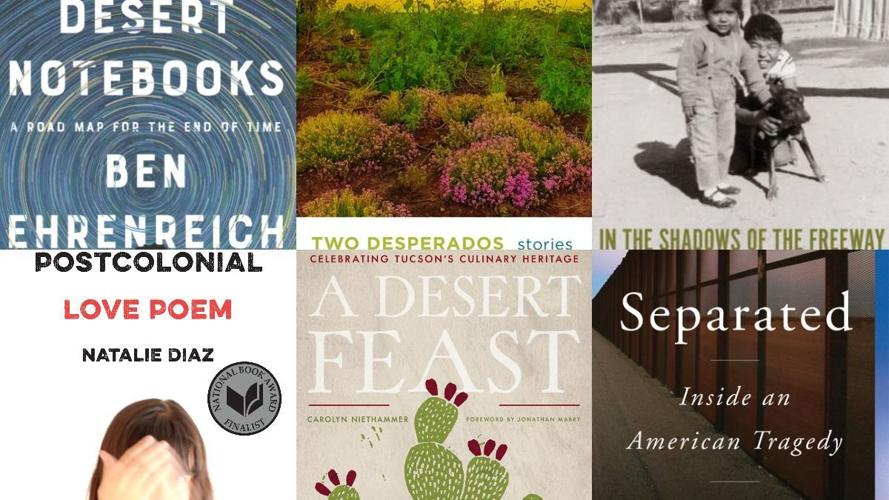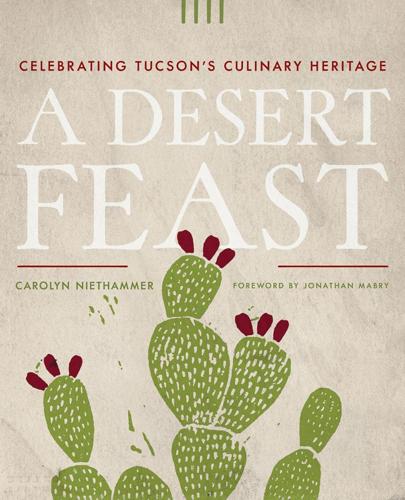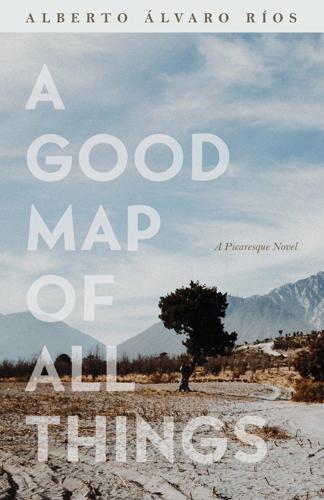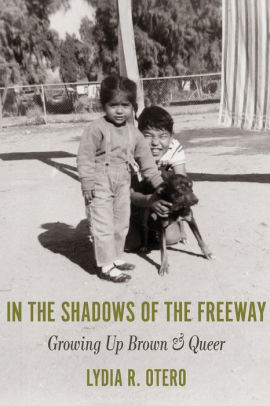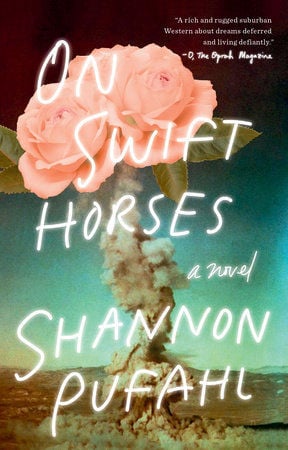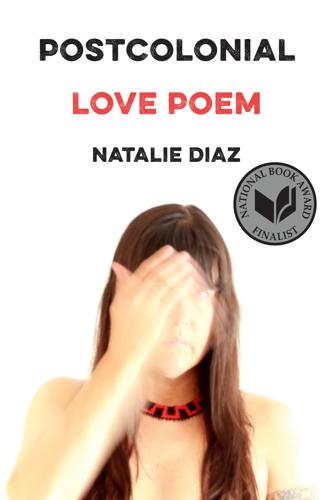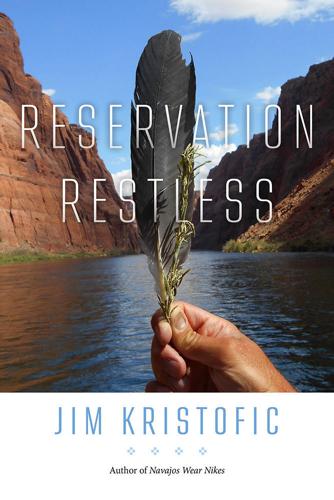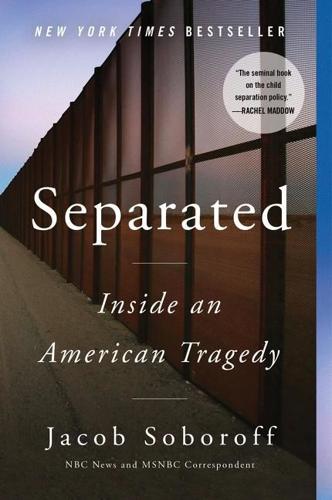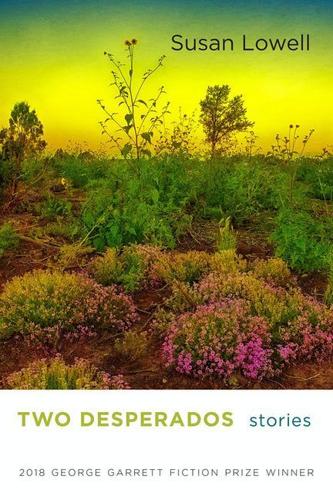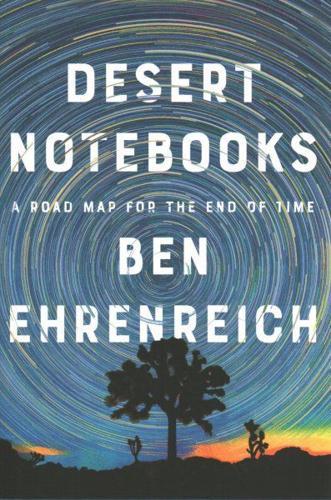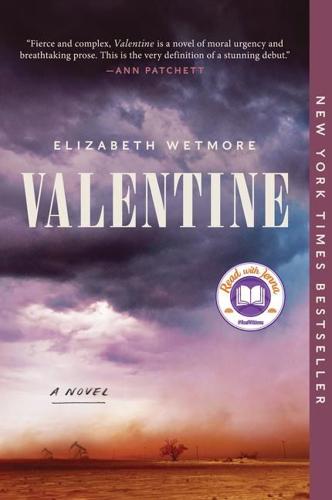If the COVID-19 pandemic has you feeling disconnected from the place we call home and the cultures within it, this list of Southwest-themed books may be the cure.
The Pima County Public Library has released its 44th annual Southwest Books of the Year. The titles, ranging widely from fiction and poetry to cooking and food and art and photography, can be found through the library online and as hardcopies, as well as at more than a dozen local and regional stores, including Antigone Books and all three Bookmans.
The list also features some great books for kids. This year’s picks for children include “Fry Bread: A Native American Family Story,” a vibrantly-illustrated, award-winning book, which the New York Times called, “wonderful and sweet.” And, for young adults, there’s “The Everything I Have Lost,” a coming-of-age story published by Cinco Puntos Press.
Here are the selection committee’s top picks for Southwest Books of the Year, which were released between November 2019 and October 2020.
Southwest Books of the Year is made possible by a gift from the Friends of the Pima County Public Library and by the Arizona State Library, Archives, and Public Records, a division of the Secretary of State’s Office, with federal funds from the Institute of Museum and Library Services.
Find the titles and learn more about Southwest Books of the Year by visiting library.pima.gov/southwestbooks.

“A Desert Feast: Celebrating Tucson’s Culinary Heritage”
“A Desert Feast: Celebrating Tucson’s Culinary Heritage” by Carolyn J. Niethammer
Tucson is a food city, boasting, as Carolyn Niethammer writes, the best 23 square miles of Mexican food north of Mexico. It is also the first U.S. venue designated as a City of Gastronomy by the United Nations. Why should that be? Niethammer explains: the honor grows from having a food tradition that extends back thousands of years, making use of hundreds of desert plants, and then adding on to it, like so many ingredients in a good bowl of cocido, elements from many other food traditions and cultures. We can eat food from just about every corner of the world here, and we’ve made it part of an almost inexhaustible culinary lexicon. You’ll want to try Niethammer’s carefully curated recipes — and develop a greener thumb by growing ingredients yourself and a broadened geography by visiting the growers and chefs she highlights. Every Southwestern city — every city, period — needs a book like hers, and it’s Tucson’s good fortune to have this.
— Selected by Gregory McNamee and Margie Trujillo-Farmer

“A Good Map of All Things: A Picaresque Novel”
“A Good Map of All Things: A Picaresque Novel” by Alberto Álvaro Ríos
A small town nestled in the Pimería Alta of northern Mexico is home to folks as warmly engaging as they are idiosyncratic in this delightful novel by award-winning poet and author Alberto Álvaro Ríos. Midway through the 20th century, modern ways have just begun to creep into lives long accustomed to swaying in time to the rhythms of tradition, and as a result, the local public science society has few members. Far from mundane, the simplicity of the town’s everyday-ness is rendered exquisite in Ríos’ able hands: love emerges and endures, faith is uncompromising, and a good day is one in which nothing much happens. The characters glide in and out of each other’s orbit, weaving their individual stories into a communal chronicle. The narrative is particularly elegant, marked by a poetic charm that makes this memorable work both a comfort and a joy to read — but this is not surprising, coming as it does from Arizona’s first poet laureate.
— Selected by Helene Woodhams and Margie Trujillo-Farmer

“In the Shadows of the Freeway: Growing Up Brown & Queer”
“In the Shadows of the Freeway: Growing Up Brown & Queer” by Lydia R. Otero
Lydia Otero’s new book gives us a personal narrative of Tucson from the mid-1950s into the 1960s. Otero shares memories of life in their family’s thriving Mexican American neighborhood, the events that lead to that neighborhood being demolished for “progress,” and life beyond the confines of that neighborhood. Otero experienced painful interactions with its gatekeepers, their rules for gender identity, and how one was to act as an “American.” The author’s family had been in Southern Arizona for many generations, but as the influx of Tucson newcomers increased, the family and the greater Mexican American community began to be viewed as foreigners in their own home. Otero gives us insight into these difficult and tragic changes. Otero also reveals thoughts and experiences around acknowledging sexual awareness and how this is perceived by family and friends. Otero’s frankness and insight will connect with the disenfranchised everywhere.
— Selected by Margie Trujillo-Farmer and Christine Wald-Hopkins

“On Swift Horses”
“On Swift Horses” by Shannon Pufahl
In her stellar debut novel, Pufahl paints a mesmerizing portrait of women and men searching for firm footing in the mid-20th century Southwest poised on the brink of cataclysmic transformation. Muriel, the novel’s main character, has migrated with her husband from rural Kansas, lured by the prospect of building a permanent home in one of the fledgling suburbs springing up around San Diego. There, she is compulsively drawn to the electric excitement of the horse track and to her mysterious brother-in-law’s seemingly aimless wandering, from Las Vegas casinos to the back streets of Tijuana. Muriel’s search eventually reveals surprising truths about herself. Pufahl’s elegantly crafted exploration of the crooked trail of self-discovery, set against the backdrop of the modern world in transition, provides an unforgettable read.
— Selected by Bruce Dinges and Vicki Ann Duraine

“Postcolonial Love Poem”
“Postcolonial Love Poem” by Natalie Diaz
Natural wonders, classical mythology, and crushing desire inhabit this powerful collection by Mojave poet Natalie Diaz. “I carry a river,” she writes. The Colorado “…is who I am... This is not a metaphor...” The poems are physical — fierce, sensual, ferocious. In “I, Minotaur,” she writes, “A head like mine was shaped on thirst. / I dream what is wet or might quench — / aquifers, rivers, cenotes, canals.” The title poem — representative of the collection — is a love poem expressed in geological metaphor, but it also invokes Native tradition and decries colonization. They’re mostly lyrical, but some of Diaz’s poems are prose-like and droll. From “Top Ten Reasons Why Indians Are Good at Basketball:” “Creator gave us a choice: …write like an Indian god, or… have a [sweet] jump shot... Everyone but Sherman Alexie chose the jump shot.” It’s a warm literary nod from ex-pro basketball player Diaz, whose poetry is as commanding and dynamic as sport.
— Selected by Christine Wald-Hopkins and Margie Trujillo-Farmer

“Reservation Restless”
“Reservation Restless” by Jim Kristofic
Reading and writing, says Kristofic, are born of restlessness, and it was restlessness that brought him to Coyote Canyon on the Navajo Nation the day he, literally, walked through a rainbow. Kristofic understands the science of rainbows, but that made it no less wondrous to a writer who clearly appreciates natural wonders and the ancient Navajo ways of understanding them. It moved him to begin this book, itself a wonder of autobiography, deep introspection, and marvel at all creation. Why do we wander? What draws us homeward? These questions are at the heart of his accounts of his wilderness experiences, challenges he’s faced on and off the reservation, love, loss, and an inspirational mentor, all presented as stories, not statements, which is, he says, the Navajo way. With the keen eye of an outdoorsman for the sacred landscape and the grace of a gifted storyteller, Kristofic paints word pictures that bring his world to life.
— Selected by Helene Woodhams and Vicki Ann Duraine

“Separated: Inside an American Tragedy”
“Separated: Inside An American Tragedy” by Jacob Soboroff
An award-winning correspondent takes a deep dive into the malicious origins, gross misapplication, and lasting consequences of what he describes as the Trump administration’s “most spectacular policy fail” — the forced separation and deportation of immigrant adults and children. His story, grounded in personal observation, contemporary reporting, and a trove of public documents, not only exposes the motives behind this breathtakingly craven policy, but also the staggering ineptitude and blatant lies of the political appointees responsible for implementing it. This important book lays bare the calculated cruelty at the heart of U.S. border policy.
— Selected by Bruce Dinges, Christine Wald-Hopkins and Gregory McNamee

“Two Desperados: Stories”
“Two Desperados: Stories” by Susan Lowell
That Susan Lowell can really spin a tale. A mountain lion tracker in Southern Arizona corners an extraordinary animal ... and then has to deal with it. A welder who collects grammar-challenged headlines (“Miners Refuse to Work after Death”) wrestles with prescient dreams. A New Mexican grandfather teaches life/driving skills, and querencia (“Whatever makes birds go south”) to his 16-year-old granddaughter navigating slick mountain roads and yearning to leave home. Then there’s the arrogant, sensationalist journalist forced to confront the realities of his job; and the young woman running from a bad boyfriend in Alaska to ghosts in Tucson. Although they share Southwestern settings and gritty Western qualities, the characters and situations in Lowell’s 11 stories couldn’t be less alike. What they have in common, however, is Lowell’s grounded, yet shimmering, prose; her empathetic wit, her fertile imagination, and her deft narration.
— Selected by Christine Wald-Hopkins, Bruce Dinges, Helene Woodhams and Margie Trujillo-Farmer

“Desert Notebooks: A Road Map for the End of Time”
“Desert Notebooks: A Road Map for the End of Time” by Ben Ehrenreich
Las Vegas, Nevada, is the world capital of the simulacrum, of the meaningless but still entertaining spectacle. Joshua Tree National Park is not without its symbols, including the weird cousin of the rain lily for which it’s named. Both places attract outcasts. Both, in writer Ben Ehrenreich’s hands, are full of signs and portents of death — not just our own, at the hands of shooters and dehydration and such, but the death of our species and our planet. “Not much time left, time is running out, as if time were a ribbon and we’re getting close to the end of the spool,” he writes. “What black hole awaits us when the last of it unravels?” It’s a good question: Our civilizations don’t seem to be serving the world well, while our politics and economics create only destruction. Bookish and brilliant, cheerless and necessary: the spirits of both Charles Bowden and Albert Camus live on in this lyrical meditation on all that we stand to lose.
— Selected by Gregory McNamee and Vicki Ann Duraine

“Valentine: A Novel”
“Valentine: A Novel” by Elizabeth Wetmore
The lives of four women become tangled in the harsh West Texas landscape when young Gloria Ramirez stumbles to a remote ranch house, beaten close to death and begging for her mother. Mary Rose, seven months pregnant and “heavy as a Buick,” shields the girl from her attacker and presses the district attorney to file charges. But it’s 1976. Oil erupts from the grazing ground in Odessa, cattle make room for oil derricks, and if that blond boy from a good family is all junked up on amphetamines, folks say he is “fighting OPEC prices and Arabs.” So it’s no surprise when he gets off with probation and a fine — but for months the town picked Mary Rose clean and she is set on a reckoning. Wetmore’s debut novel is a measured, intimate look into the souls of women living in a man’s world where bigotry, greed, and violence are as commonplace as dust storms. Her unflinching portrayal will linger long after the last page.
— Selected by Vicki Ann Duraine and Christine Wald-Hopkins


